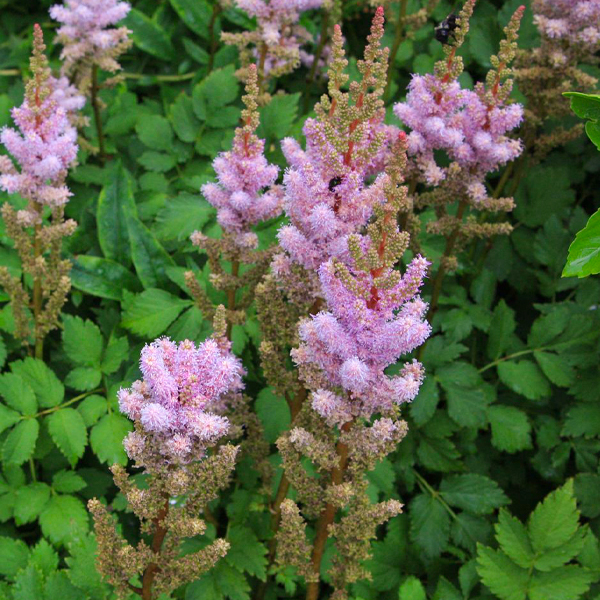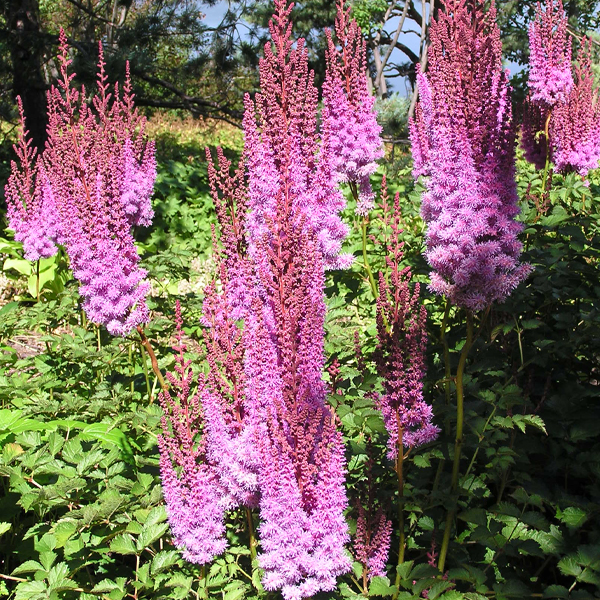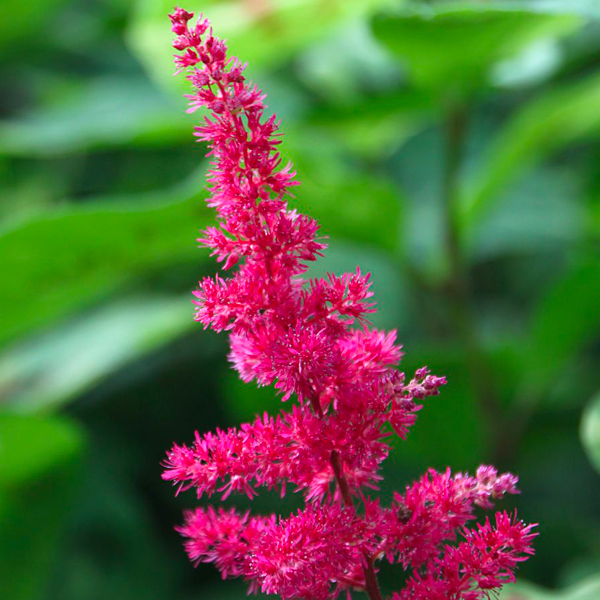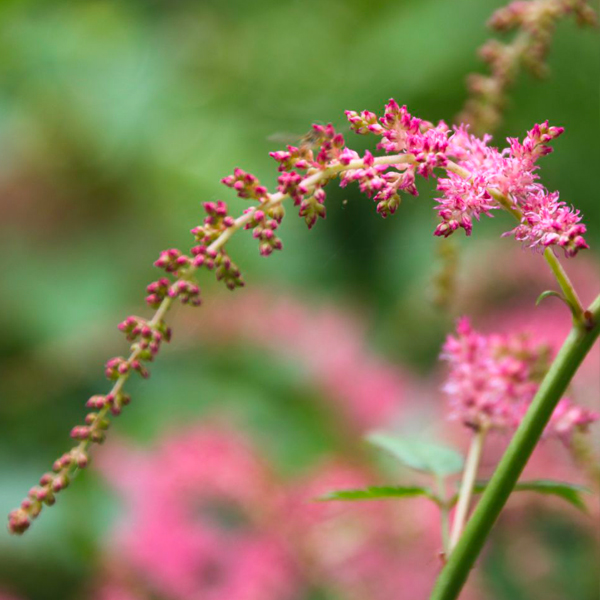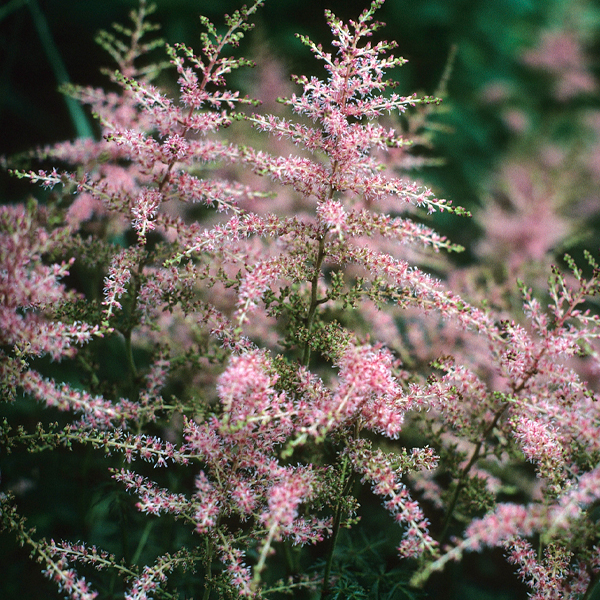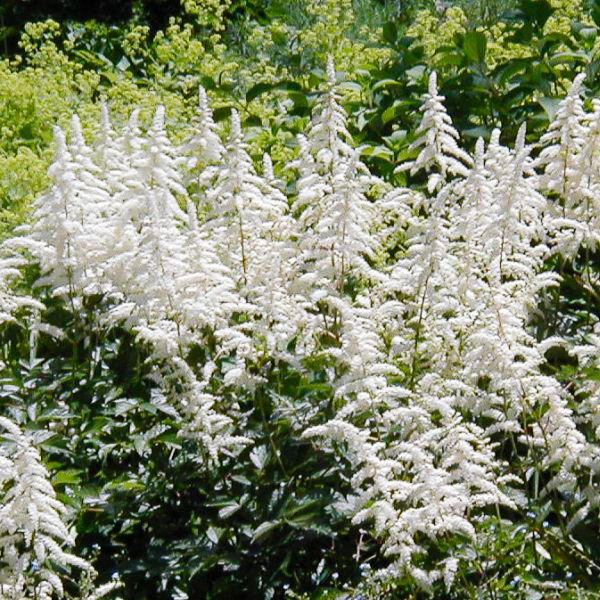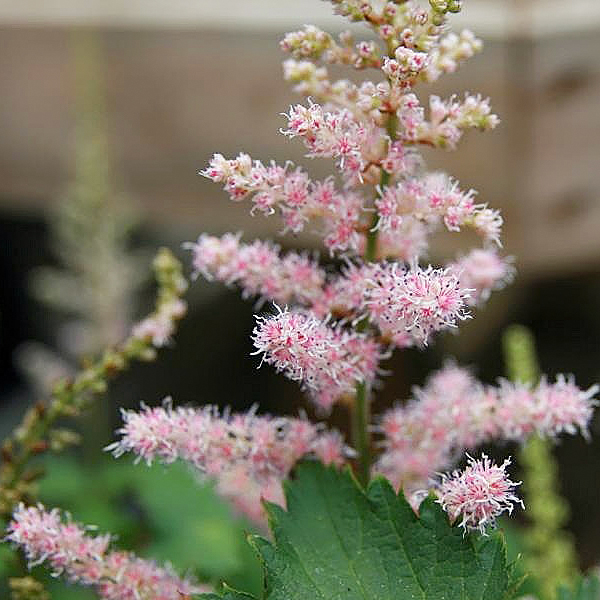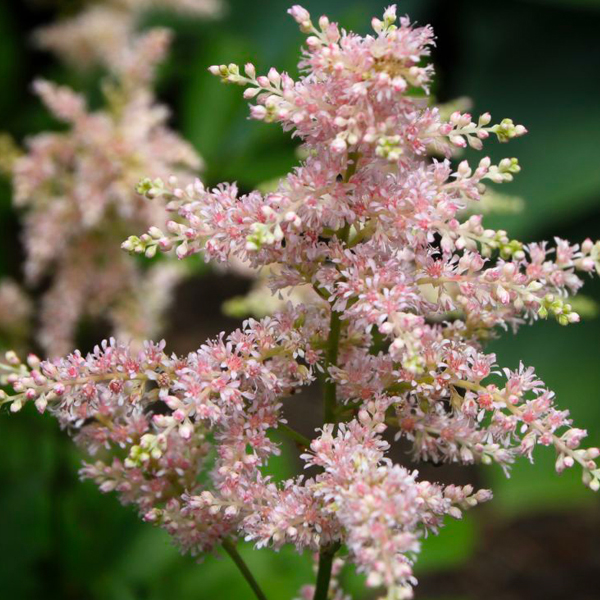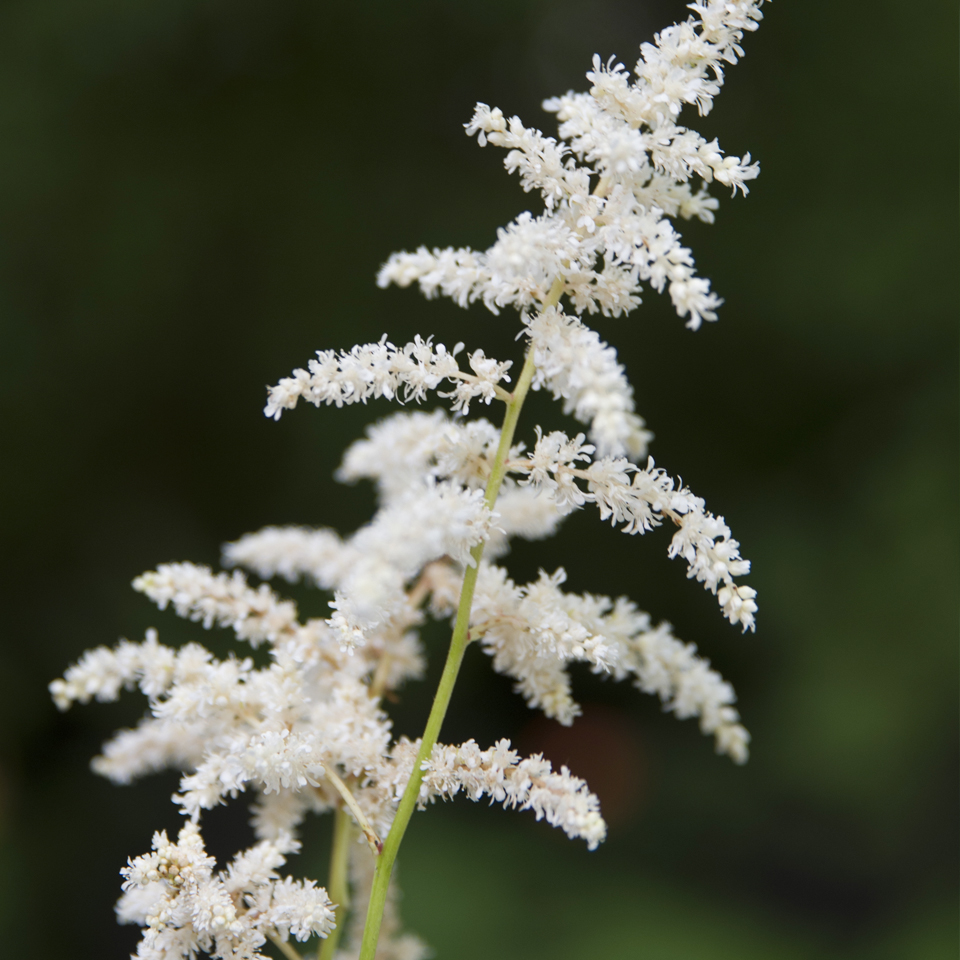

Plant Profiles
Astilbe
Astilbe spp.
As your eyes move across a beautiful landscape, consider the plants that give you pause.
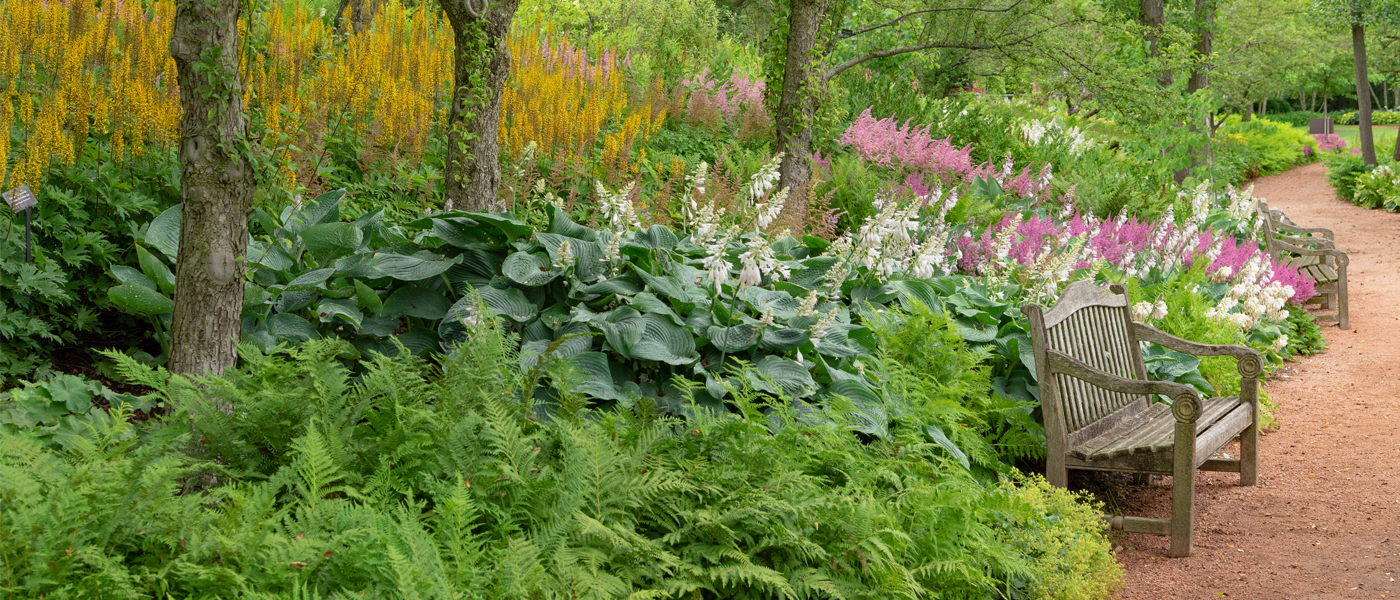
In the opinion of renowned garden writer Allen Lacy, the astilbe is one of these prized garden plants. Multidimensional, versatile and adaptable to a variety of settings, it is one of the "steeples and spikes" in a panoramic garden. At the Chicago Botanic Garden, these lovely perennials are integrated throughout many garden vignettes, from the high-volume Waterfall Garden to the serene pond plantings of the Landscape Gardens, and along vast stretches of the Lakeside Gardens.
The roar of tumbling water serves as a dramatic backdrop to the botanic waterfall of cascading plants. Punctuating these waves of greenery are masses of astilbes, pointing skyward. "Astilbes are tremendous weapons in the fight against rugs and dumplings." So stated Mr. Lacy as he cheered the use of the astilbe amid one-dimensional ground covers (rugs) and mounding plants (dumplings). In the Waterfall Garden, astilbes undulate through a stand of American hornbeam, sweep as ground covers in a wooded glen, line trails of contrasting colors, and mix with spring hostas, ferns and columbines, and summer daylilies.
From their early spring emergence in tones of glossy green, bronze, or red to their final winter display of dried foliage and seed heads, astilbes offer an astounding array of qualities to the garden. The basal clump of bright, feathery, or dissected leaves supports strong stems of feathery plumes or tight spikes containing hundreds of tiny florets. Demanding full to part shade and a ready supply of moisture throughout the season, they are one of the few such plants not bothered by slugs. Disease- and insect-resistant, they prefer well-drained, organic soil with a good mix of leaf mold and compost, which imitates the natural forest floor. Known to be heavy feeders, they can be satisfied with a one-time application of a timed-release granular fertilizer.
Astilbes can be problematic if planted in strong sun or exposed to drought — both situations will cause their leaves to curl and scorch. To preserve precious moisture, mulch garden beds. Hardy from zones 4 to 8, they are a favored winter-interest plant and many gardeners keep them standing in their dried form. The season of bloom varies with the species and cultivar, but astilbes could bloom from May to August. To keep plants fresh, divide clumps every three to four years in spring.
The options in flower color, fragrance, height, and bloom time all add to the astilbe's interest. A favorite choice of the lowest-growing, ground-cover type is Astilbe simplicifolia 'Sprite'. It blooms with soft pink flowers that top out at 1 1/2 feet. Another good selection from the shorter astilbes is the sturdy-stemmed, lavender-pink Astilbe chinensis 'Pumila', a late-blooming, fast-spreading ground cover.
For a dramatic statement, the tallest of the genus, Astilbe chinensis var. taquetii 'Superba', grows 4 to 5 feet and features purple-rose flowers. Cultivars of the Chinese astilbes are faster to spread, making them fine candidates for ground covers. The famous German hybridizer George Arends (1862-1952) considered the astilbe such a favorite that he introduced 74 new cultivars in 50 years. Astilbe arendsii cultivars are among the early bloomers (May to June) and must be planted where they can receive constant moisture.Astilbe x arendsii 'Fanal' (red) lines the Waterfall Garden path along with Astilbe thunbergii'Straussenfeder' (salmon pink). The red foliage of 'Fanal' echoes the mahogany red of the fallen Scots pine needles that surround these plants.
Throughout the Lakeside Gardens and along the shoreline, look for masses of Astilbe x arendsii 'Amethyst' (lavender), 'Deutschland' (white), 'Finale' (soft pink), and Astilbe rosea 'Peach Blossom' (peachy pink). Outside the Visitor Center, you'll see Astilbe x arendsii 'Gladstone' (white).


